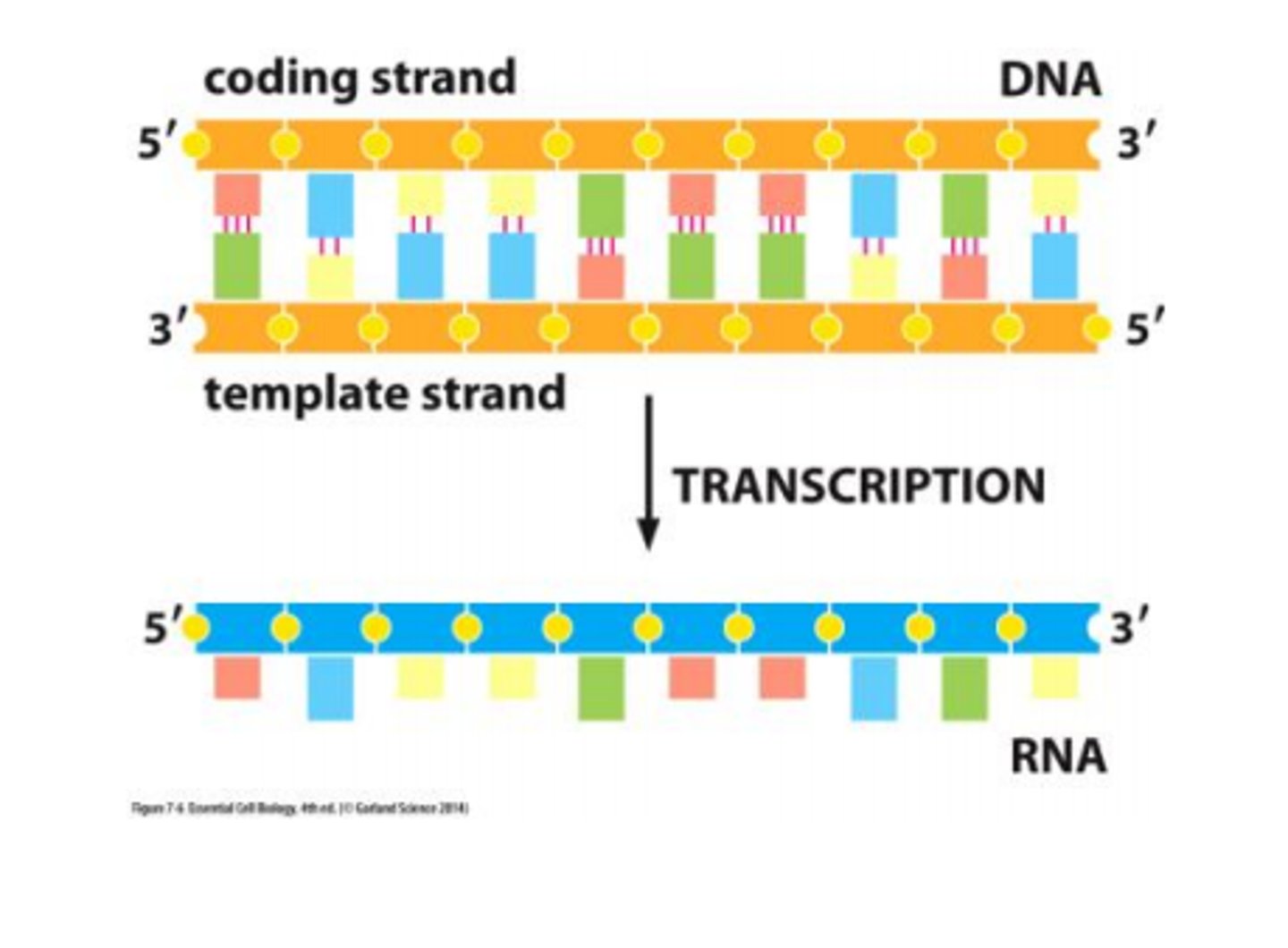Chapter 9 Discovery of the Double Helix
1/34
There's no tags or description
Looks like no tags are added yet.
Name | Mastery | Learn | Test | Matching | Spaced |
|---|
No study sessions yet.
35 Terms
Who was the main founder of the alpha helix structure
According to Dr. V:
The main founder was Rosalind Franklin
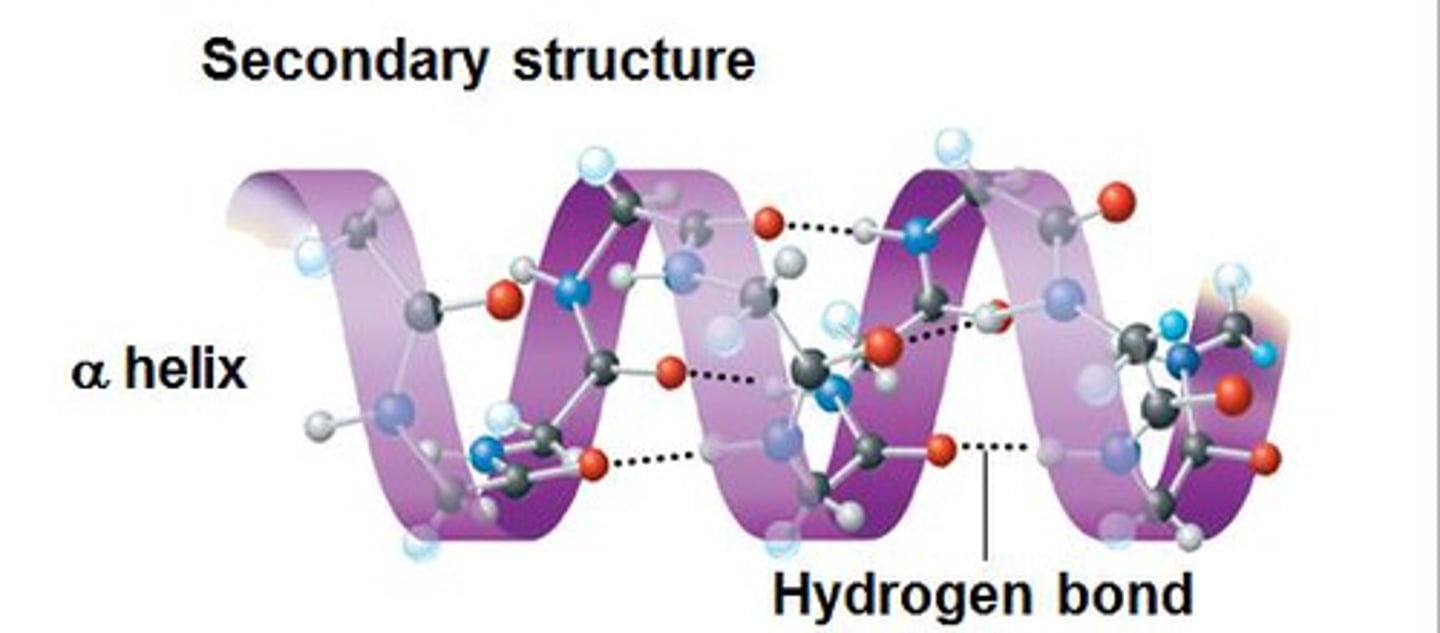
Rosalind Franklin and Maurice Wilkins
scientist who generated x-ray diffraction and crystallizing DNA
--------------------------------
DISCOVERIES:
- they discovered that DNA was double stranded
- discovered the actual distance of the base pairs from the sugars within a DNA strand based upon the x-ray diffraction experiment
Rosalind Franklin (conclusion)
the diffraction pattern from her experiments suggested several structural features of DNA were:
- helical
- more than one strand
- 10 base pairs per complete turn
James Watson and Francis Crick
Scientists who discovered the structure of DNA
--------------------------------
According to Dr. V they both stole the idea from Rosalind Franklin and got all the credit.
Linus Pauling
proposed that regions of protein can fold into a secondary structure (alpha-helix)
--------------------------------
- was discovered in a similar scenario as Rosalind Franklin by using x-ray diffraction but this time studying the wet fibers of DNA
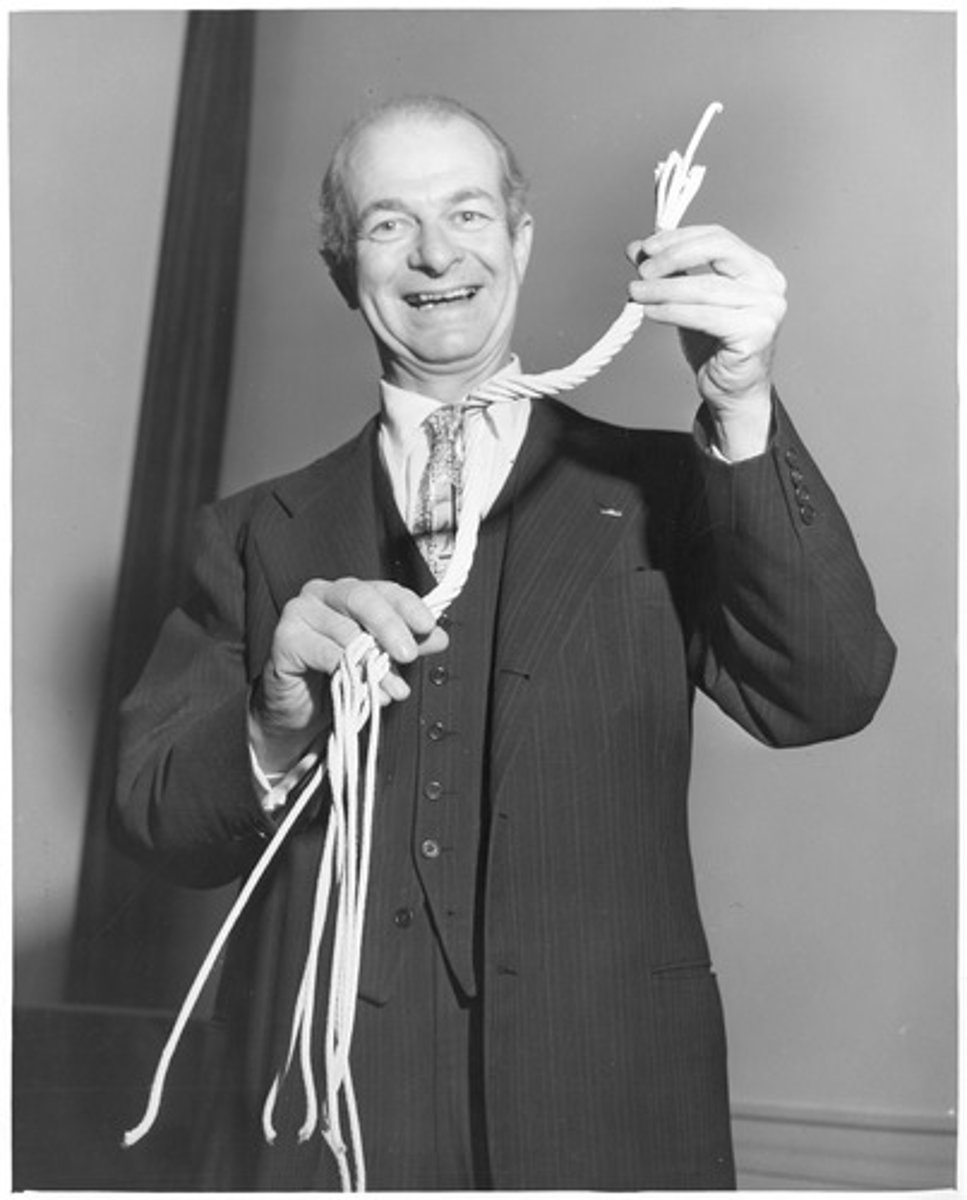
Erwin Chargaff (Chargaff's Rule)
discovered that A=T and G=C by analyzing base composition of DNA isolated from many different species
--------------------------------
DISCOVERY:
- based of his data he came to the conclusion that the ratios between complementaries are the same between A-T and C-G
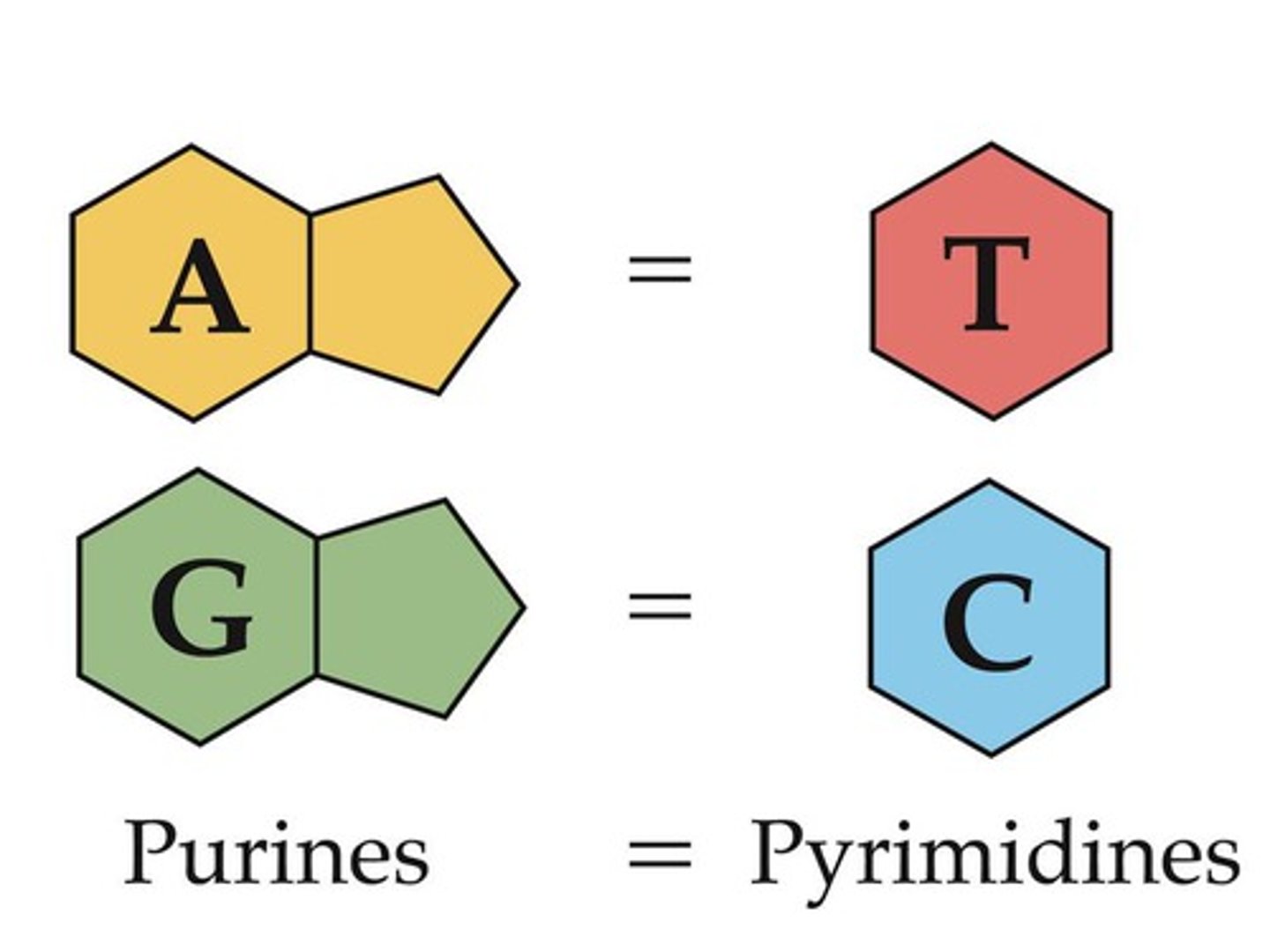
Erwin Chargaff (experiment)
1. For each type of cell chromosomal material was extracted either by using, high salt, detergent, or mild alkali treatment
--------------------------------
2. Removal of protein
--------------------------------
3. Hydrolyze the DNA to release the bases from the DNA strands
- treated genomic DNA with strong acid (to break convalent bonds between sugars and bases)
Basic rule of thumb for Cargaff's rule
- Each base pair ALWAYS has 3 rings (purine + pyrimidine)
- the distance between A=T to G=C is always 3.4 nm
B-form DNA
- 10 base pairs per turn
- 3.4 nm per turn
- the two strands are antiparallel
- is the most common structure
- is almost always has a 90-degree angle
- dsDNA (double-stranded)
- right-handed alpha-helix
- has a deep indentation called a "Major and Minor Groove"
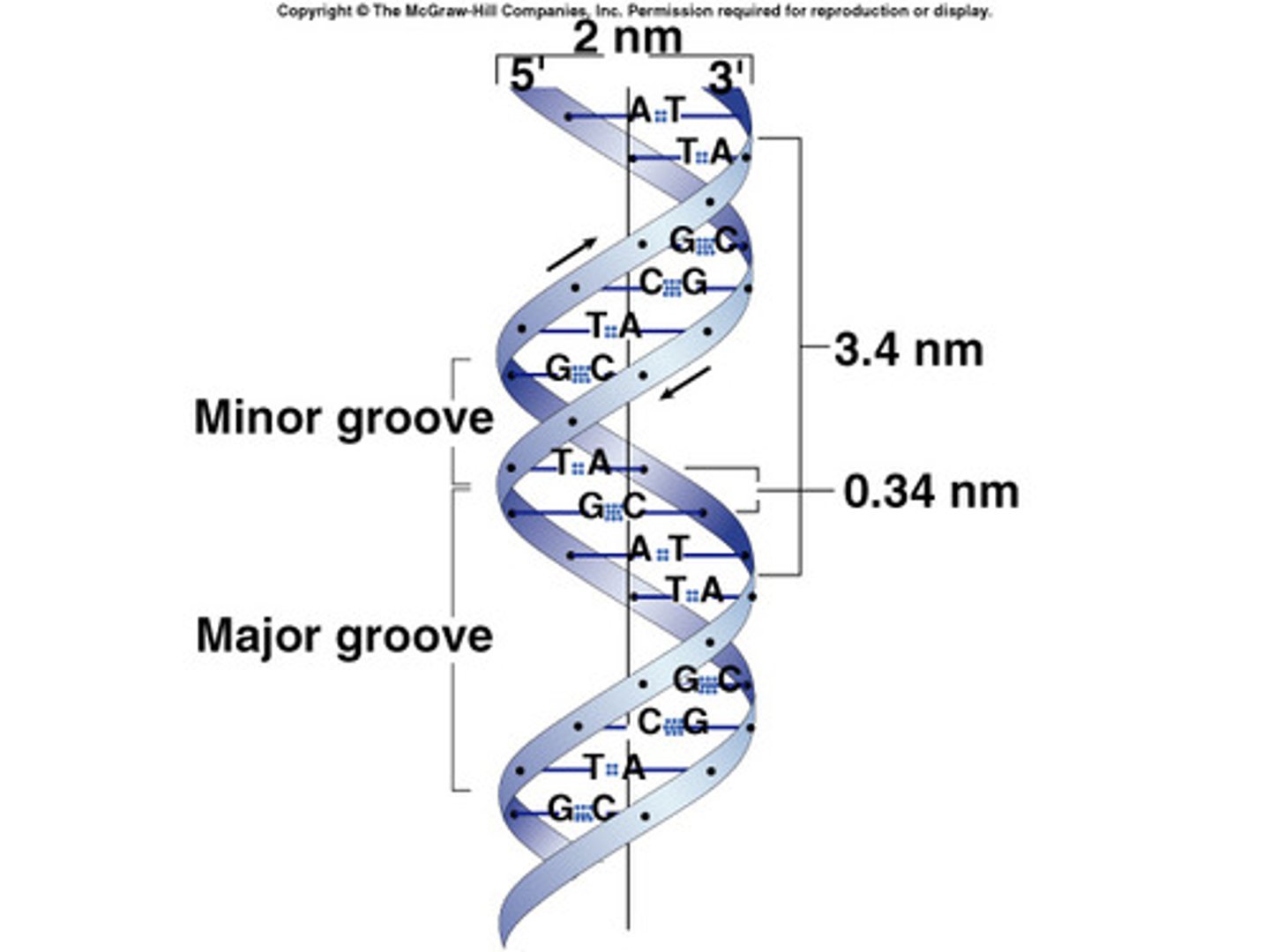
antiparallel strands
Strands parallel to each other going in opposite directions
--------------------------------
- 3'-5' and 5'-3'
--------------------------------
HINT: legit just think the opposite of
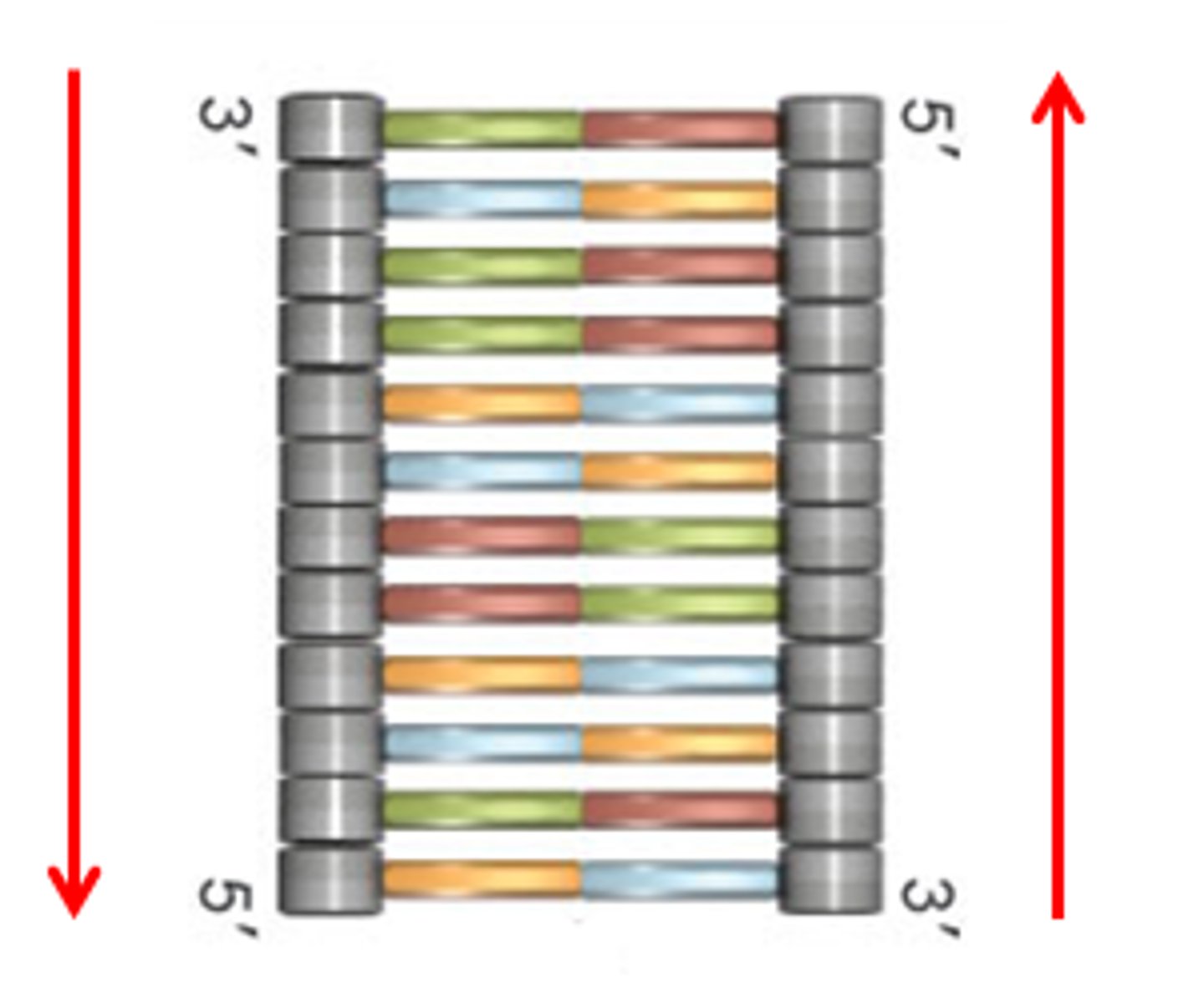
right handed alpha helix (B-form DNA)
spins counter-clockwise and is the most common structure
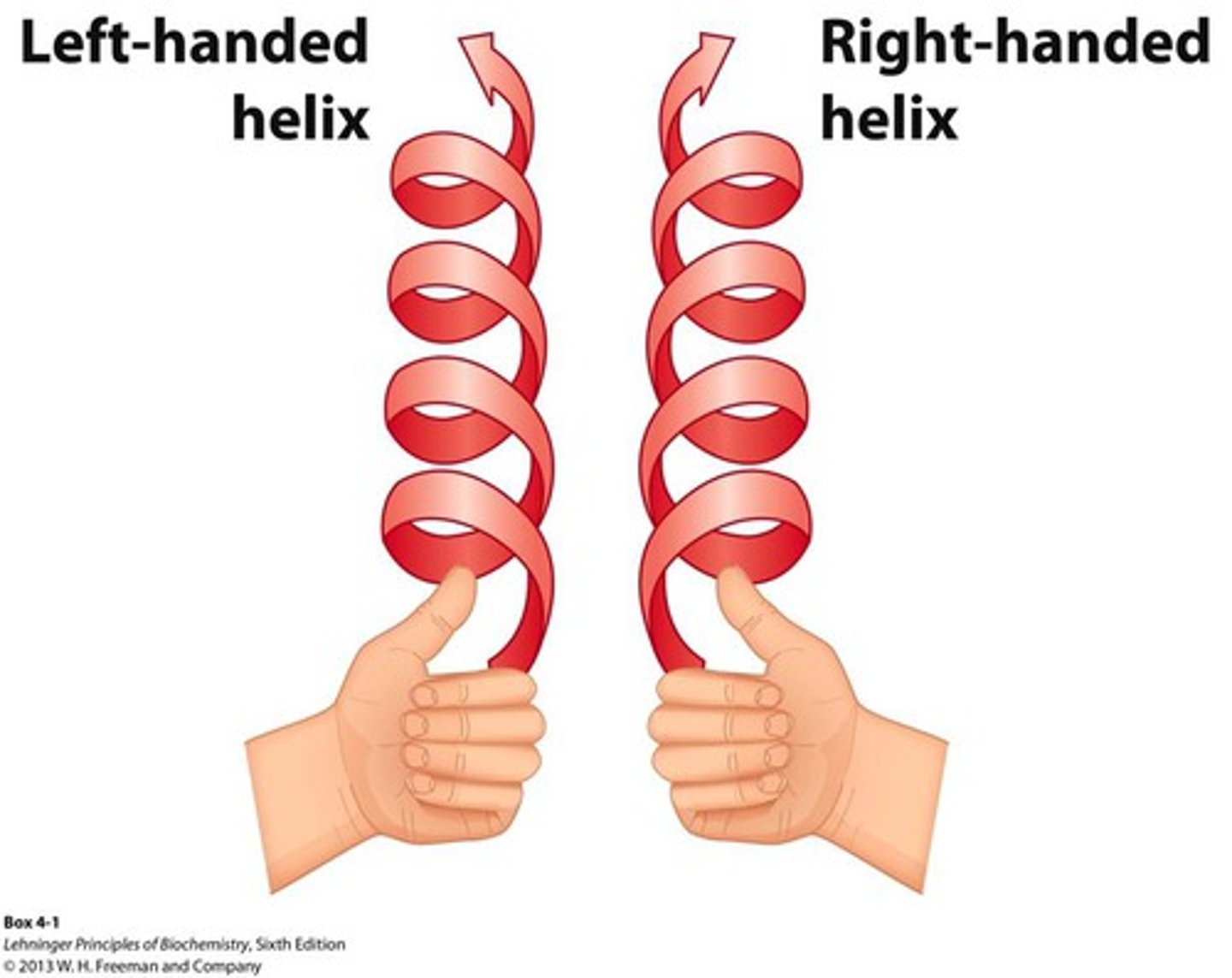
minor groove
A smaller groove that spirals around the DNA double helix.
--------------------------------
FUNCTION:
- provides a location where a protein can bind to a particular sequence of bases and affect gene expression
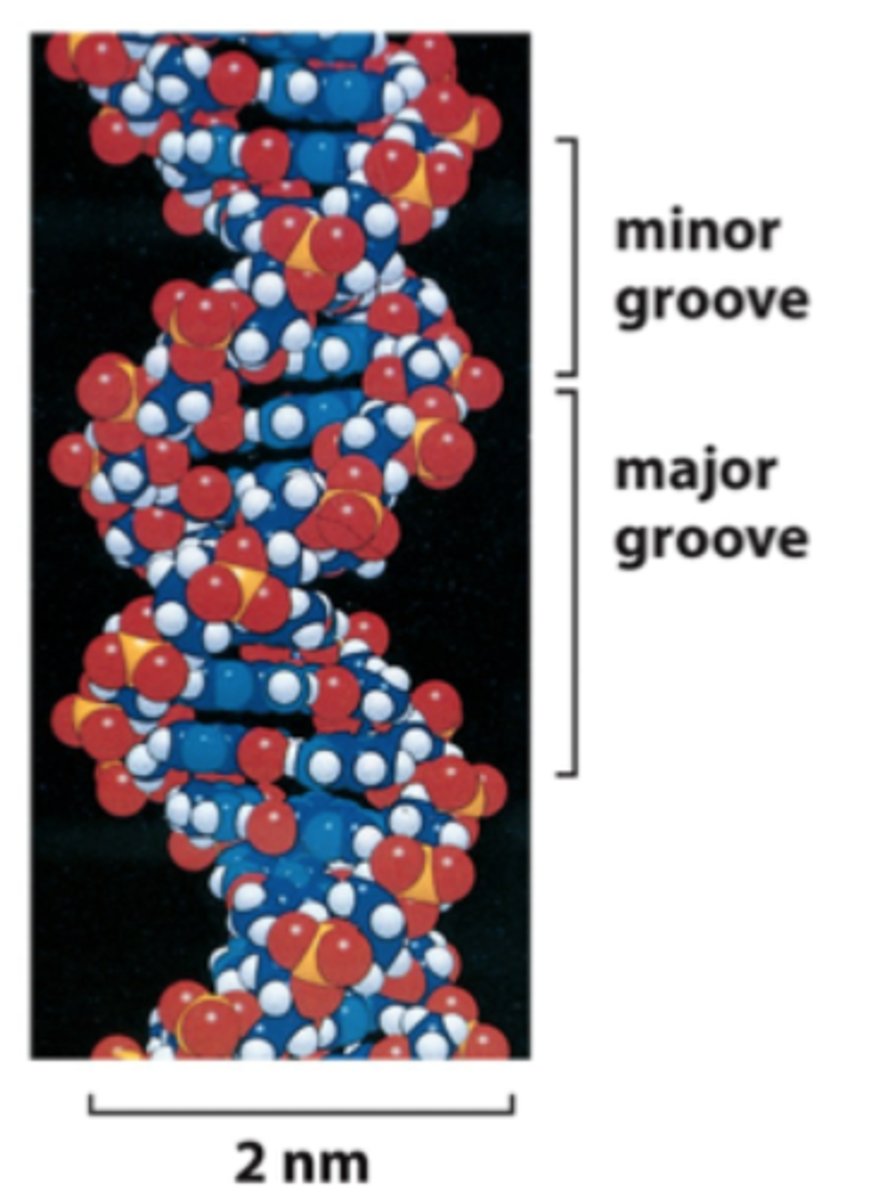
major groove
a larger groove that spirals around the DNA double helix
--------------------------------
FUNCTION:
- provides a location where a protein can bind to a particular sequence of bases and affect gene expression
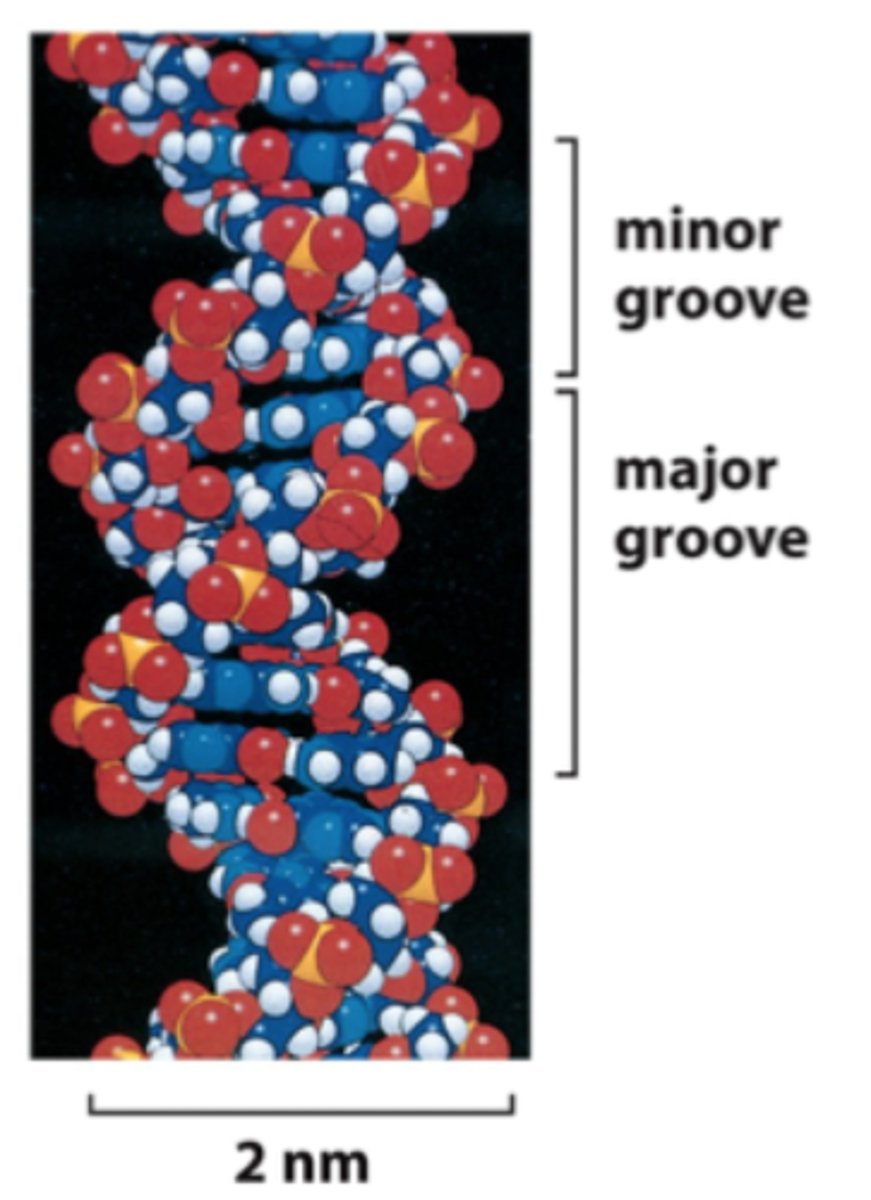
Z-form DNA
- dsDNA
- left-handed alpha helix
- 12 base pairs per turn
- contains NO major or minor groove
- in vitro vs in vivo sides
- alters purine/pyrimidine sequences
- plays a role in transcription and chromosome structure
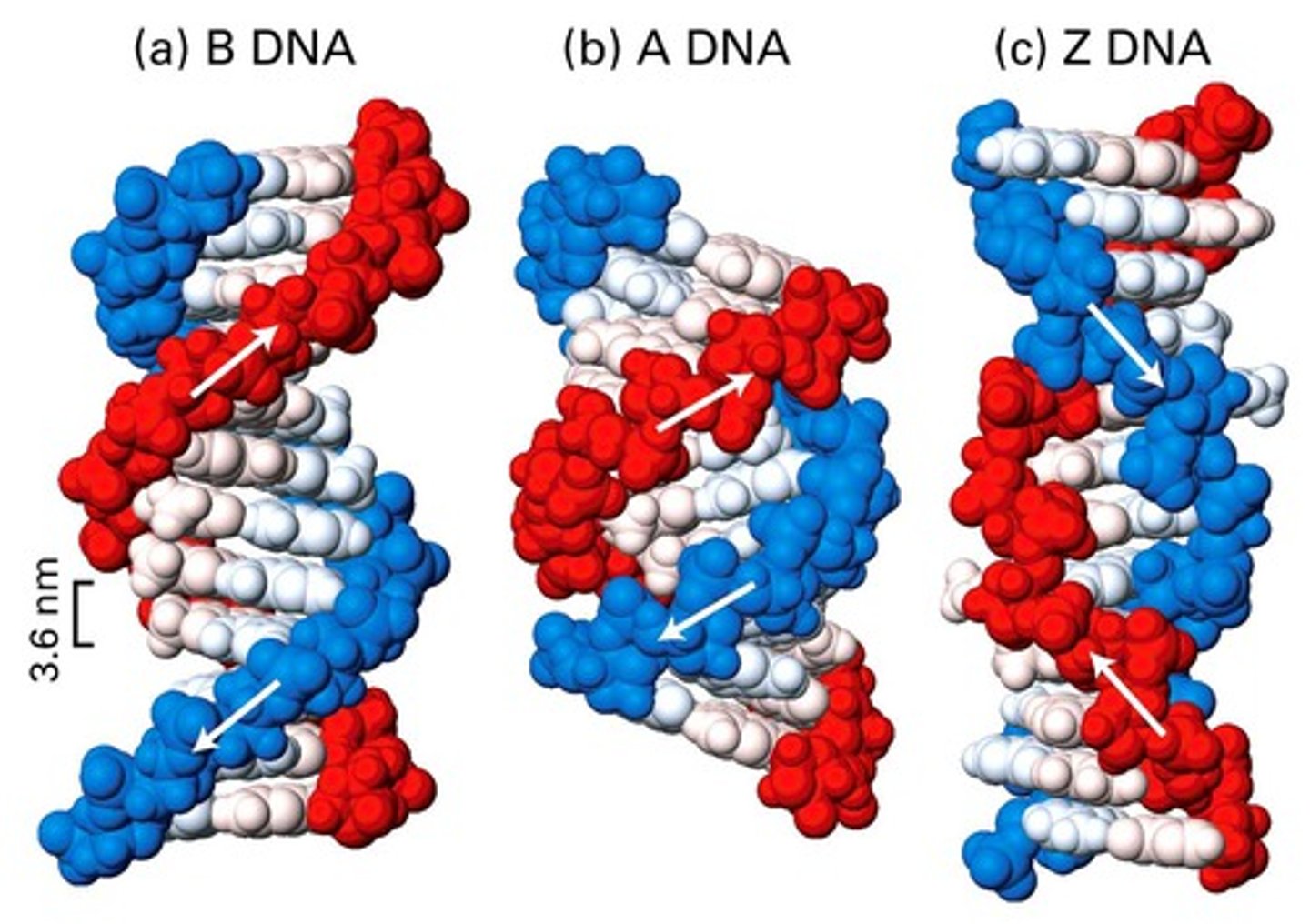
left handed alpha helix (Z-form DNA)
spins clockwise
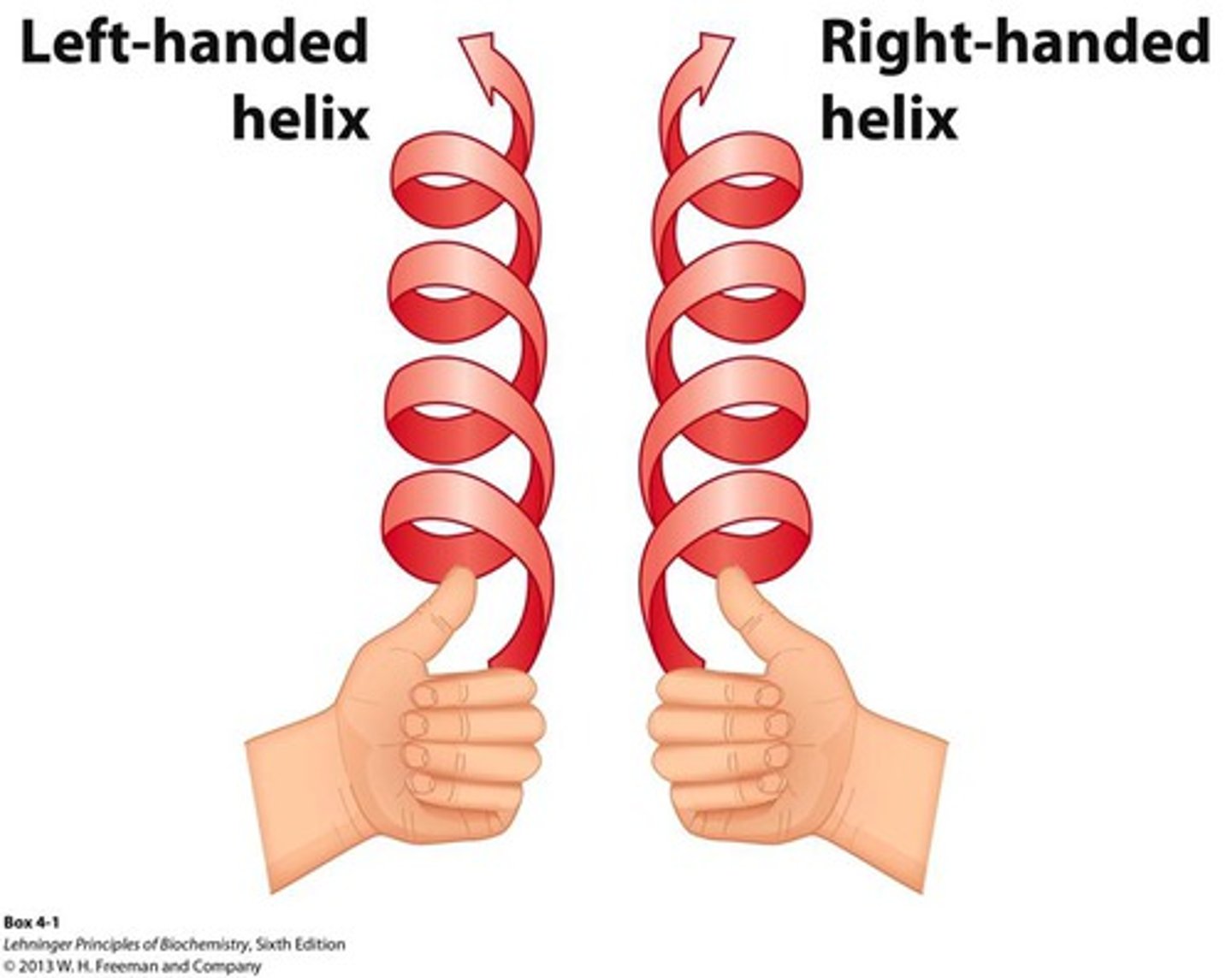
in vitro vs in vivo sides
in vitro = outside a living cell
in vivo = inside a living cell
--------------------------------
in vitro the Z DNA has a high salt condition (meaning it has a higher ionic strength) than in vivo
altering purine/pyrimidine sequences
the DNA strand continuously alternates between G and C due to high salt contractions
--------------------------------
EXAMPLE:
GCGCGCGCGCGC........
transcription and chromosome structure
Z. Form DNA is responsible for mRNA to be formed
- it can be recognized by cellular proteins
- can alter chromosome compaction
B vs Z DNA structure
B. DNA
- bases are perpendicular to the central axis (90 degrees)
--------------------------------
Z. DNA
- bases substantially tilted relative to central axis
- sugar-phosphate backbone has a zigzag pattern
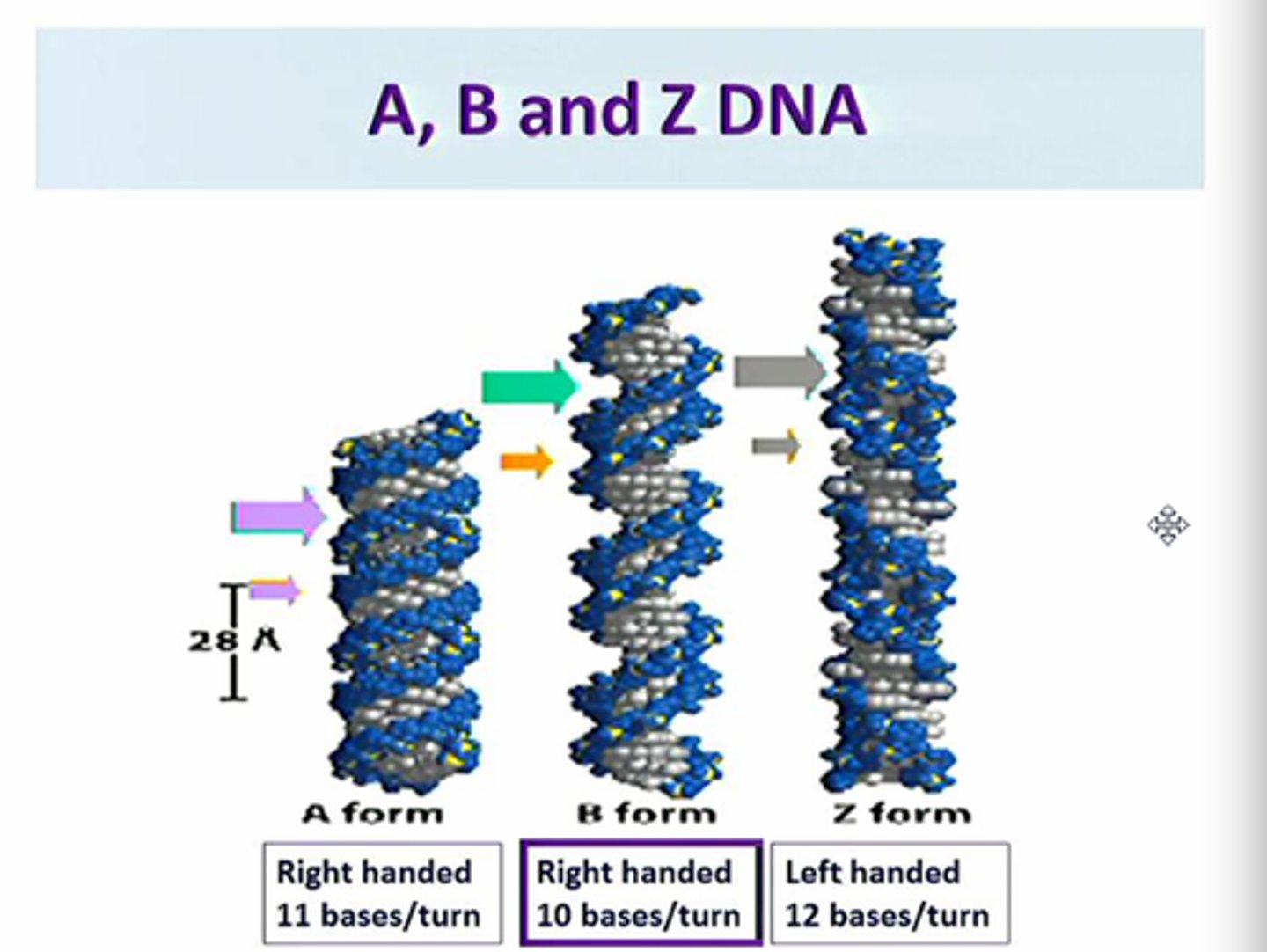
DNA structure
double-stranded structure stabilized by:
- hydrogen bonding between complementary bases
- Base stacking
--------------------------------
FEATURES:
- antiparallel
- contain 2 asymmetrical grooves on the outside of the helix (major and minor)
--------------------------------
RECAP:
DNA uses thymine as a base
DNA uses deoxyribose with 2' H
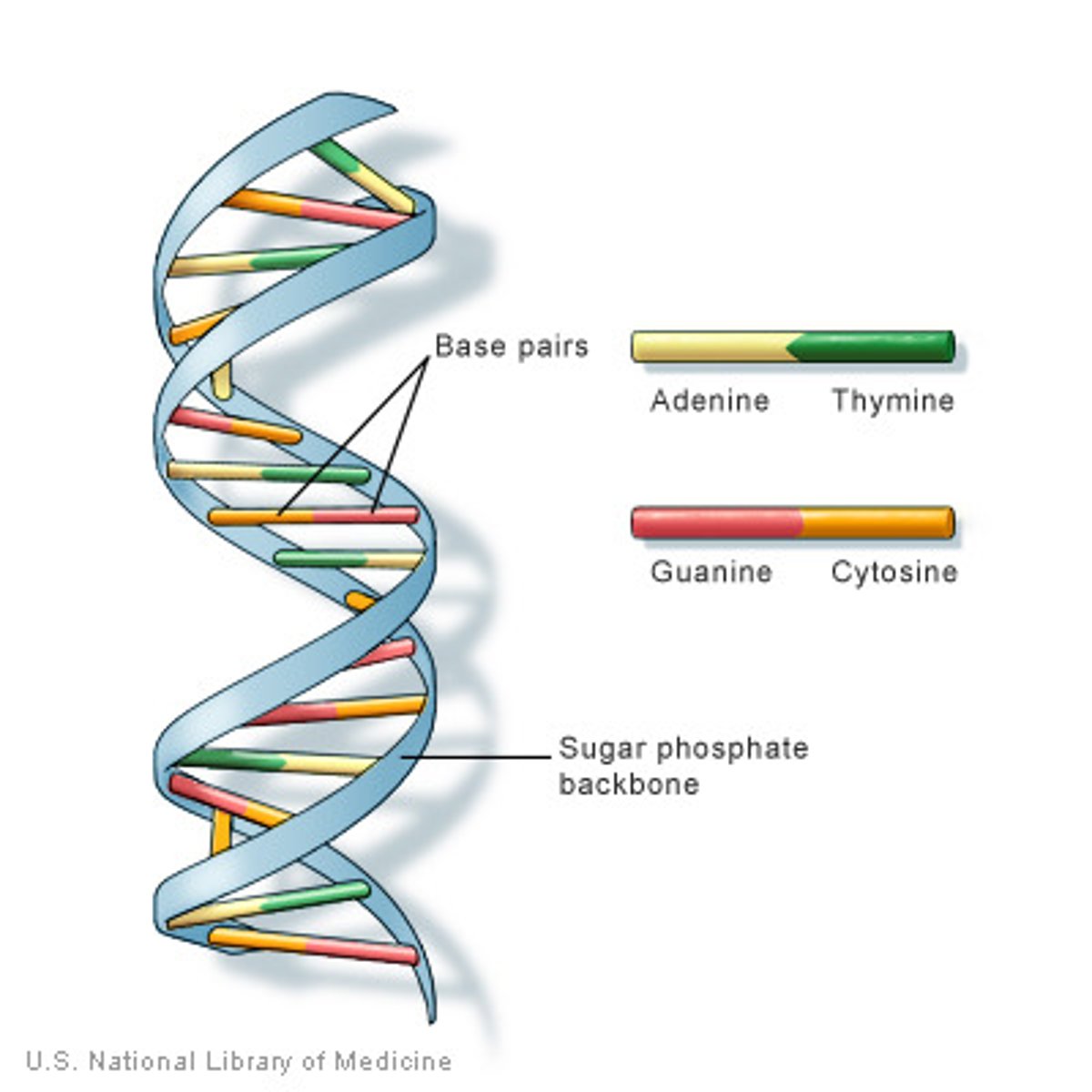
Hydrogen bonding between complementary bases
A-T = 2 hydrogen bonds
--------------------------------
C-G= 3 hydrogen bonds
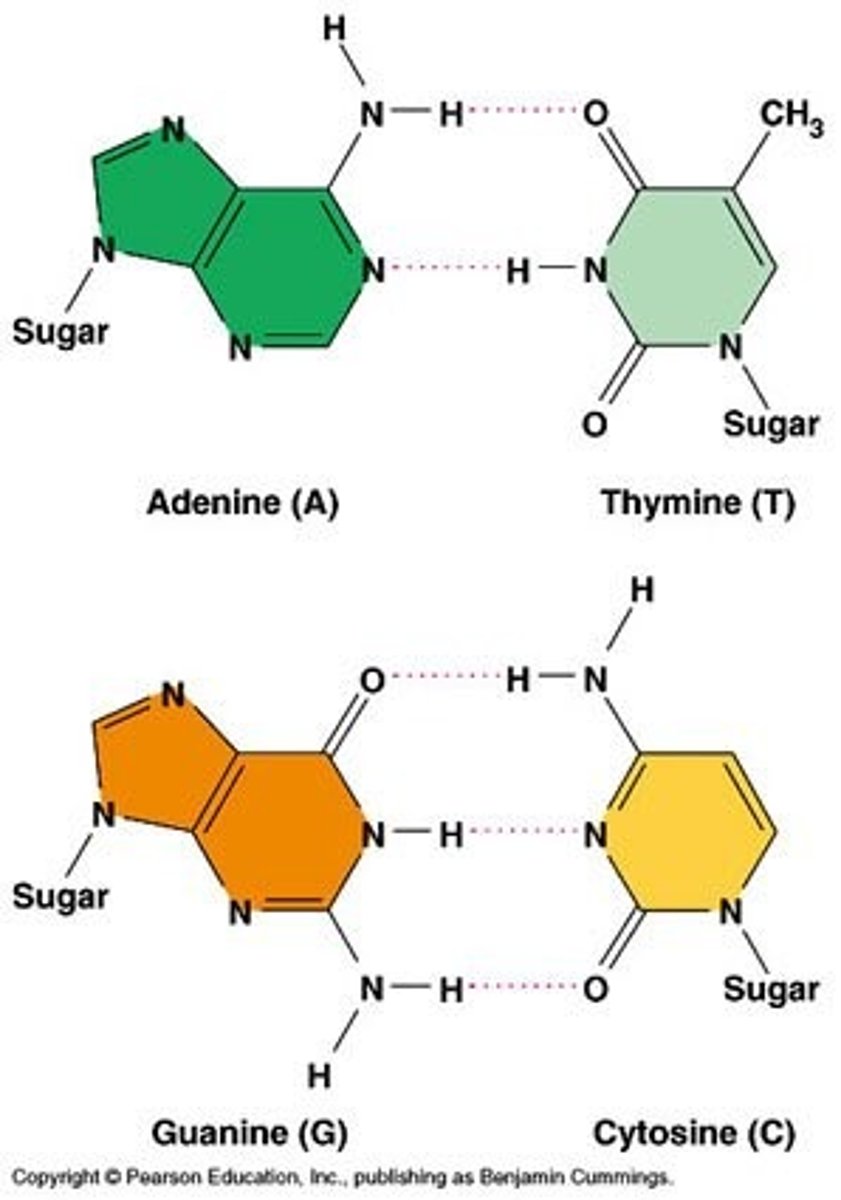
base stacking
bases are oriented so that the flattened regions are facing each other

triple helix (OREO)
HISTORY:
founded by Alexander Rich by forming DNA pieces that were made synthetically to synthesize the base structure
--------------------------------
SEQUENCE:
- T binds to AT pair in biological DNA
- C binds to CG pair in biological DNA
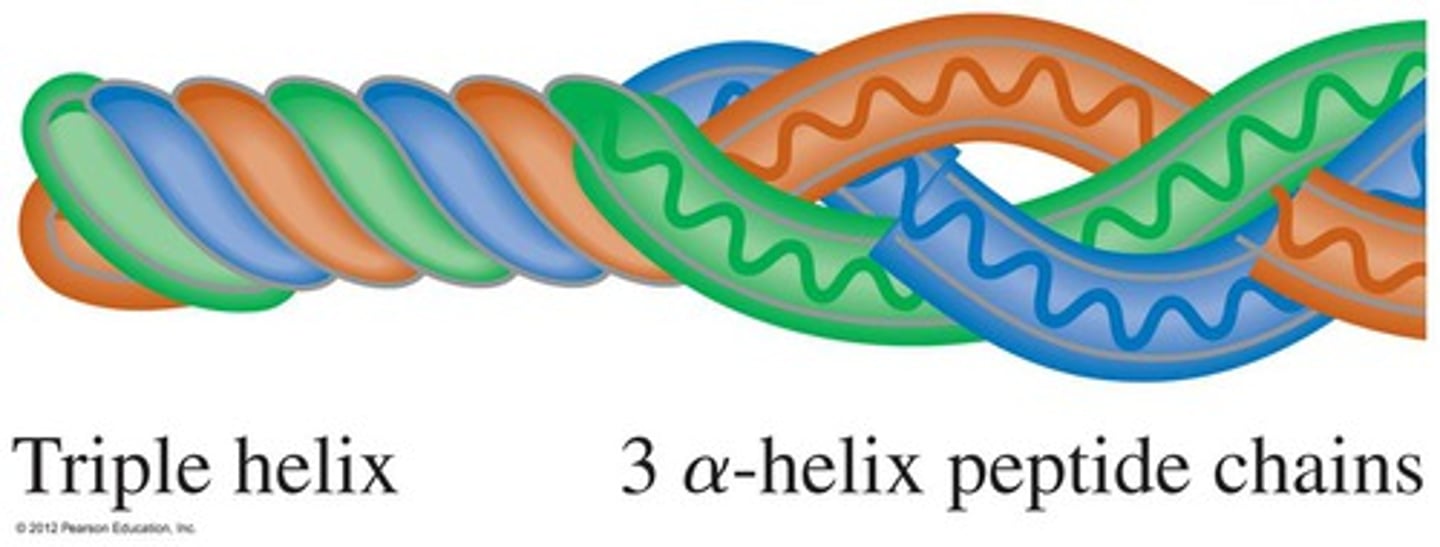
RNA structure
- "are usually" single-stranded
- are typically several hundred to thousand nucleotides in length
--------------------------------
RECAP:
- RNA uses Uracil as a base
- RNA uses Ribose with 2' OH
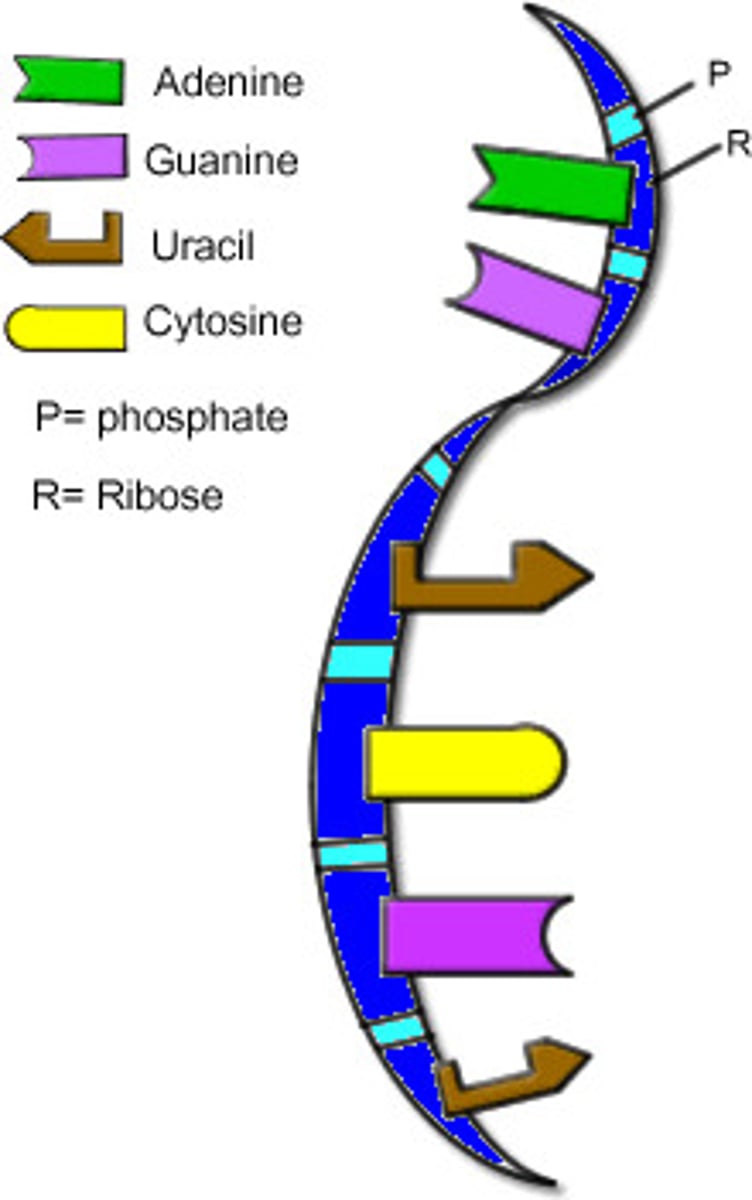
RNA synthesis
only one of the two strands of DNA is used as a template
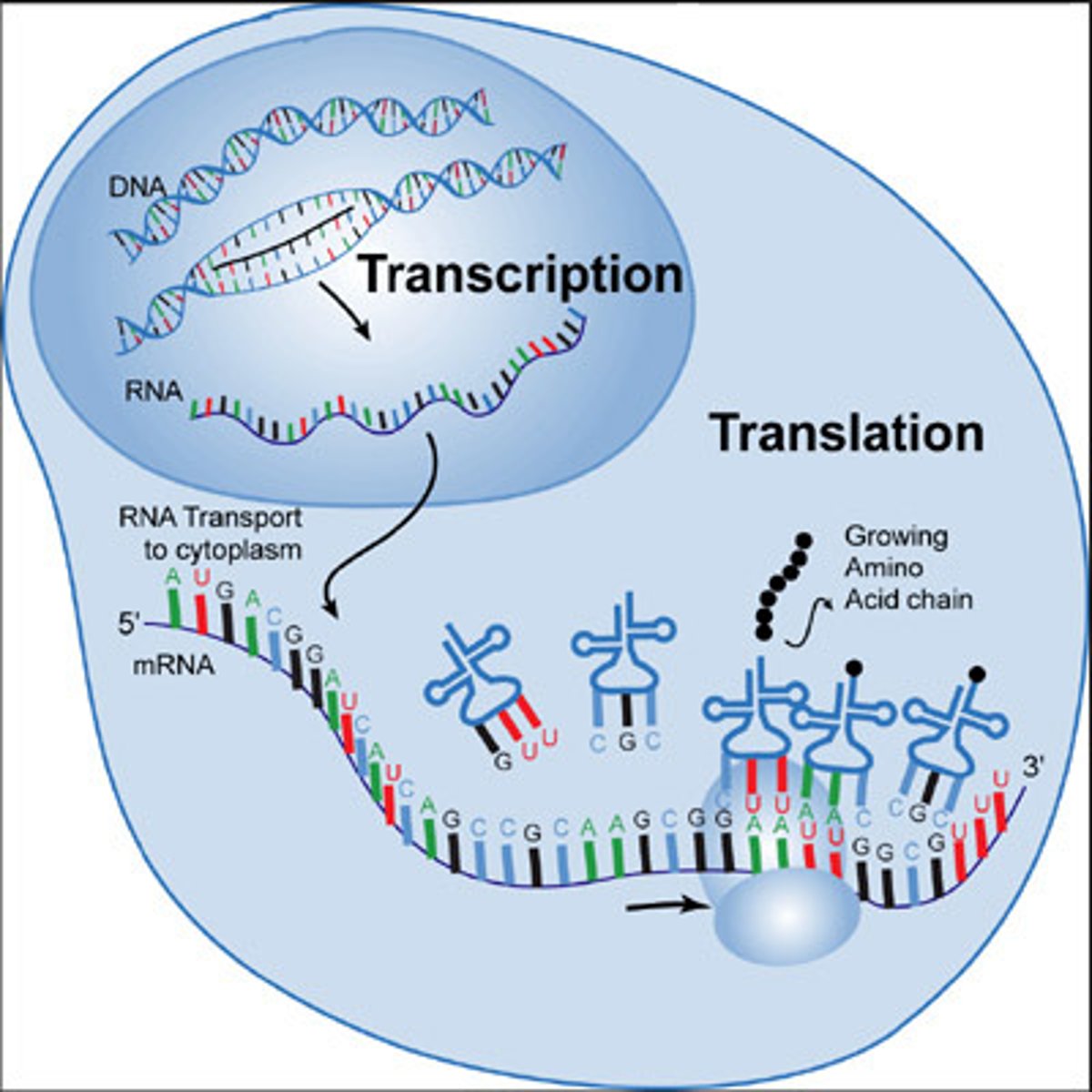
why is RNA bad in alkaline solutions?
the bases can easily deprotonate the hydrogen from the hydroxyl group on the 2'-carbon atom
RNA base pairings rules
Secondary stucture if formed due to complementary base pairing.
A-U
C-G
--------------------------------
- allows for short regions to form a double helix
RNA double helices
is very uncommon
--------------------------------
FEATURES:
- are right-handed alpha helixes
- have the A form with 11 to 12 base pairs in turn
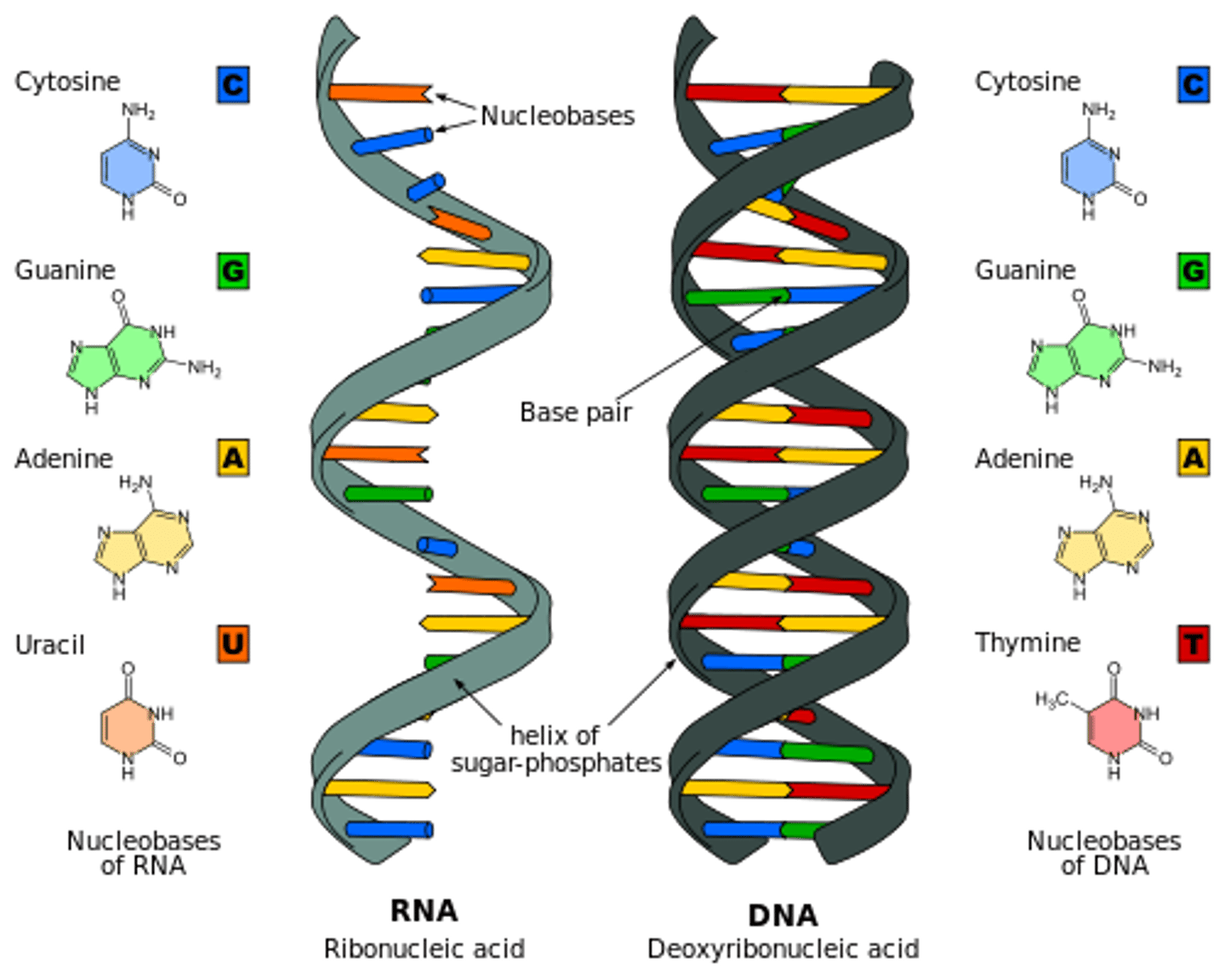
RNA secondary structures
The structures themselves are formed as signals to recruit/attract proteins
--------------------------------
TYPES OF STRUCTURES:
- Bulge loop
- Internal Loop
- Multibranched Loop
- Stem Loop
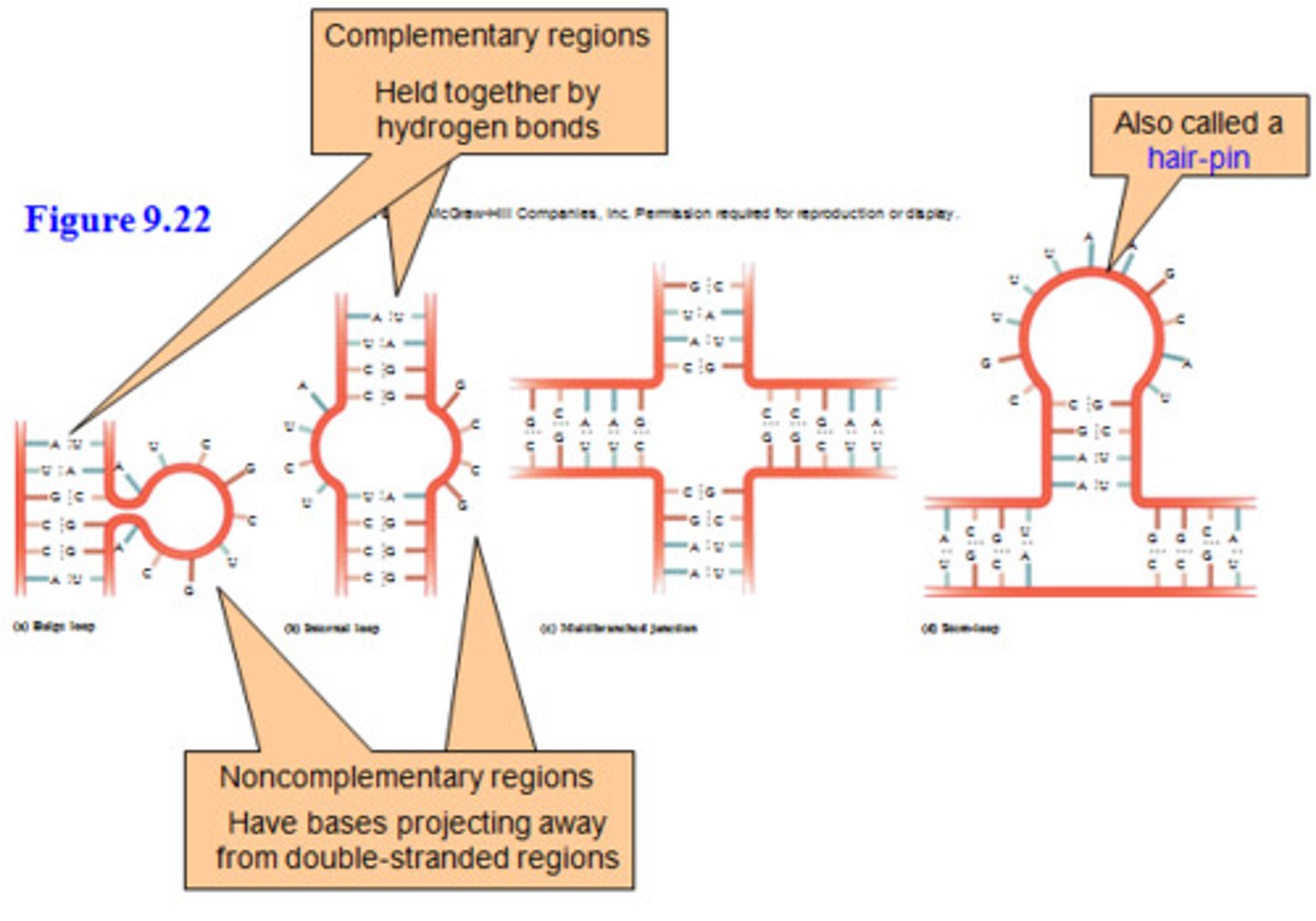
bulge loop
similar to stem-loop but no stem
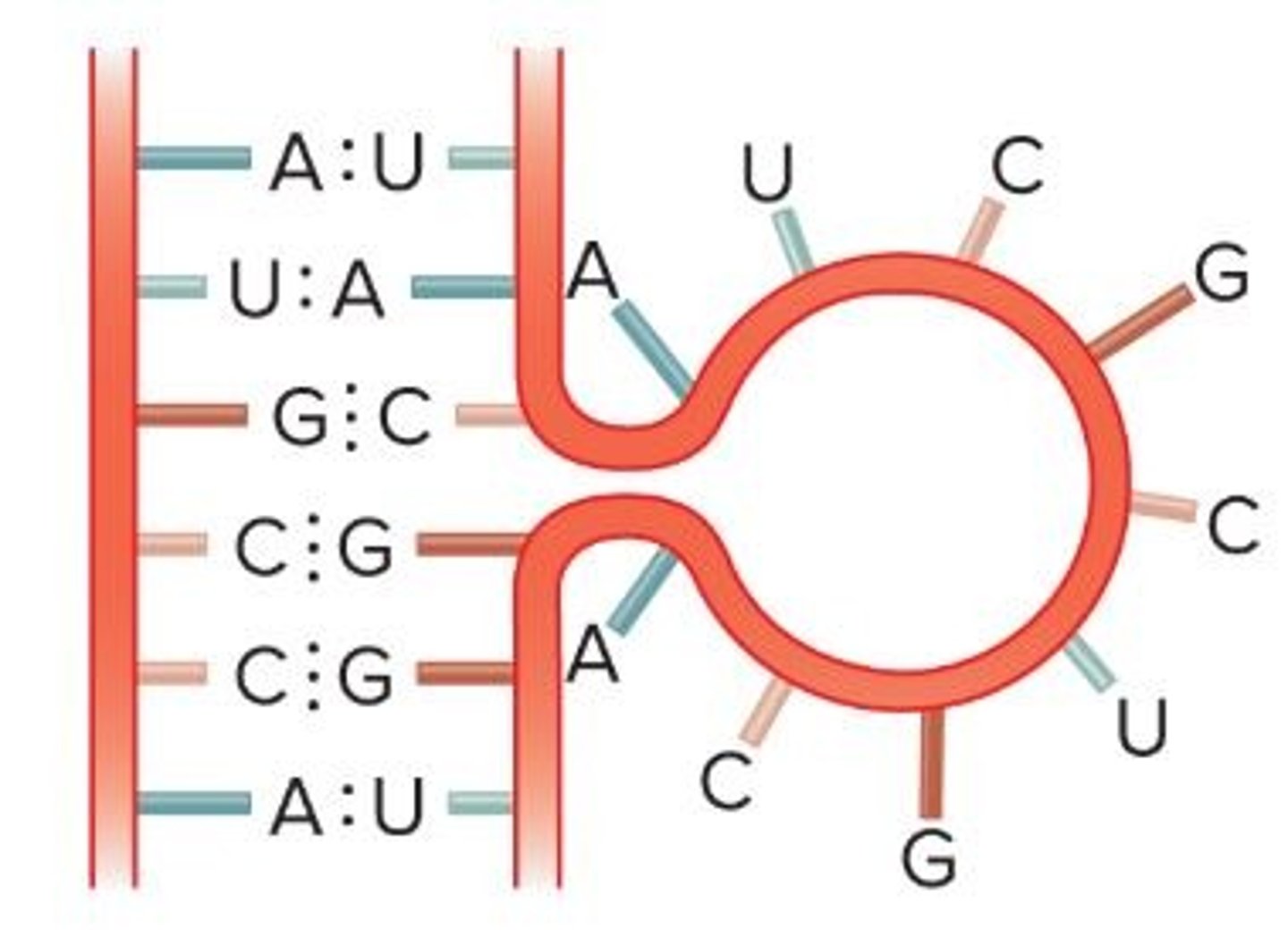
internal loop
unpaired nucleotides on either side of the stem
- contains a loop with no pairings
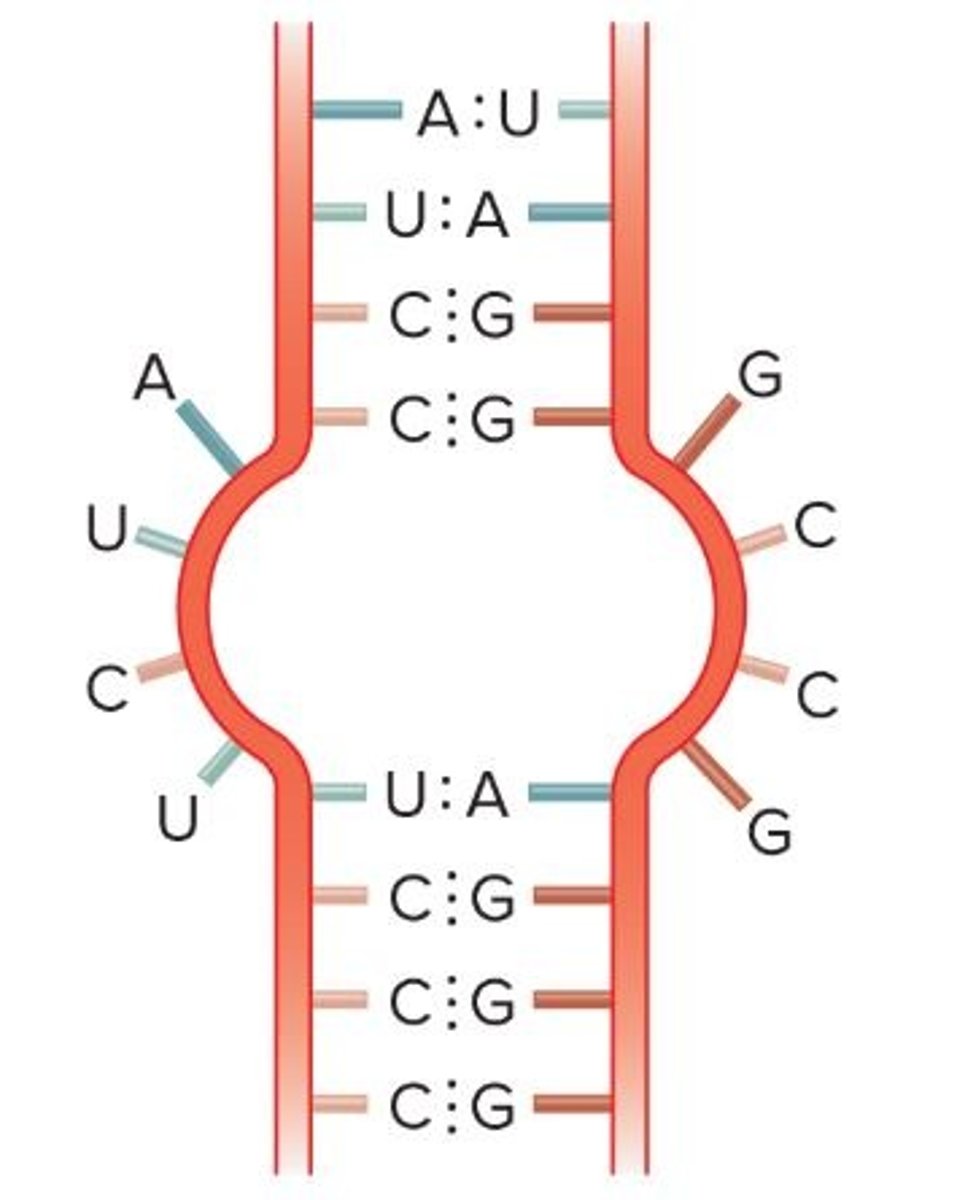
Multibranched Loop
Crossed nucleotides
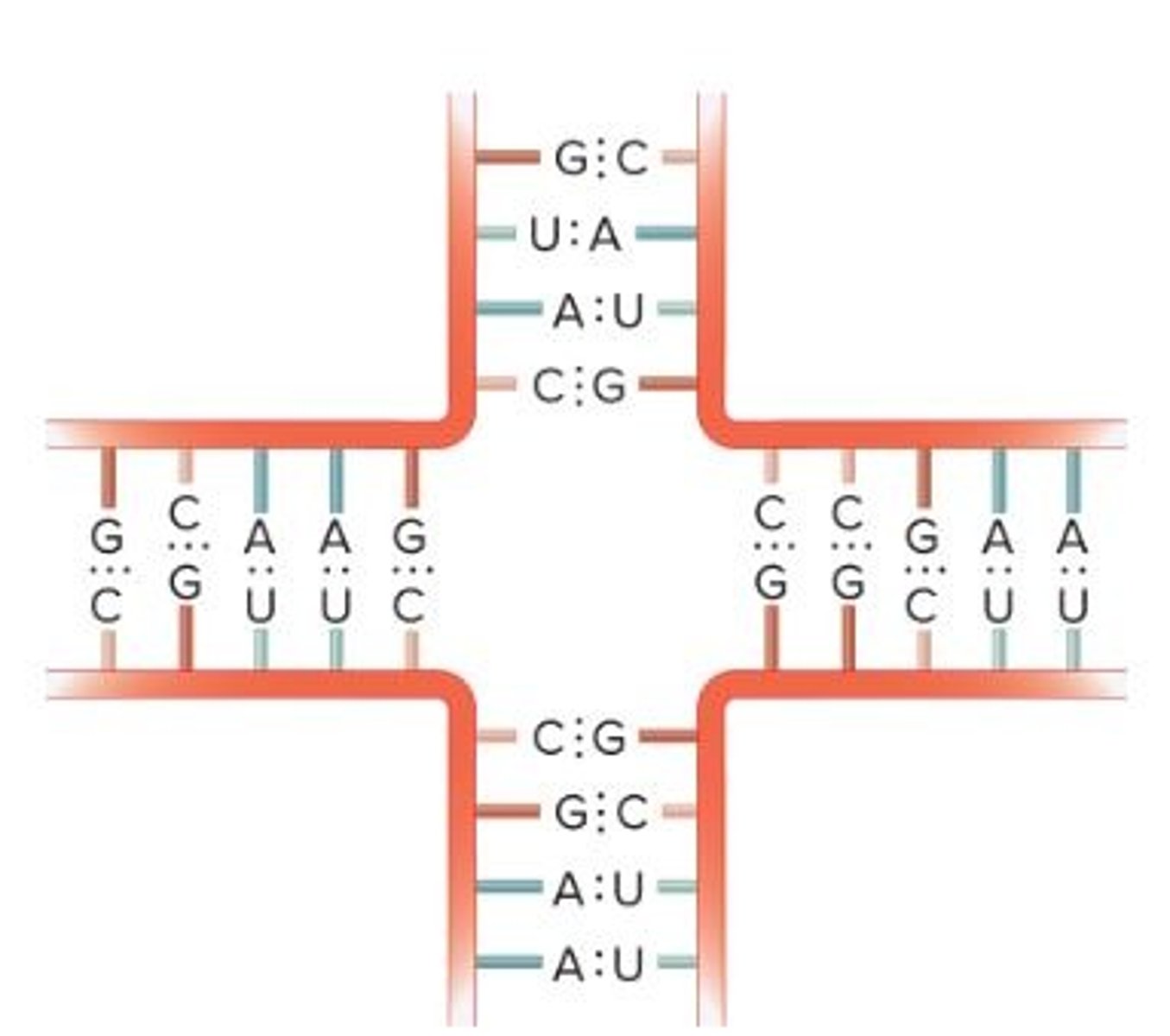
Stem loop RNA
strand folds back on itself
- contains a loop with no pairings
- contains a stem unlike a Bulge loop
- stem contains base pairs
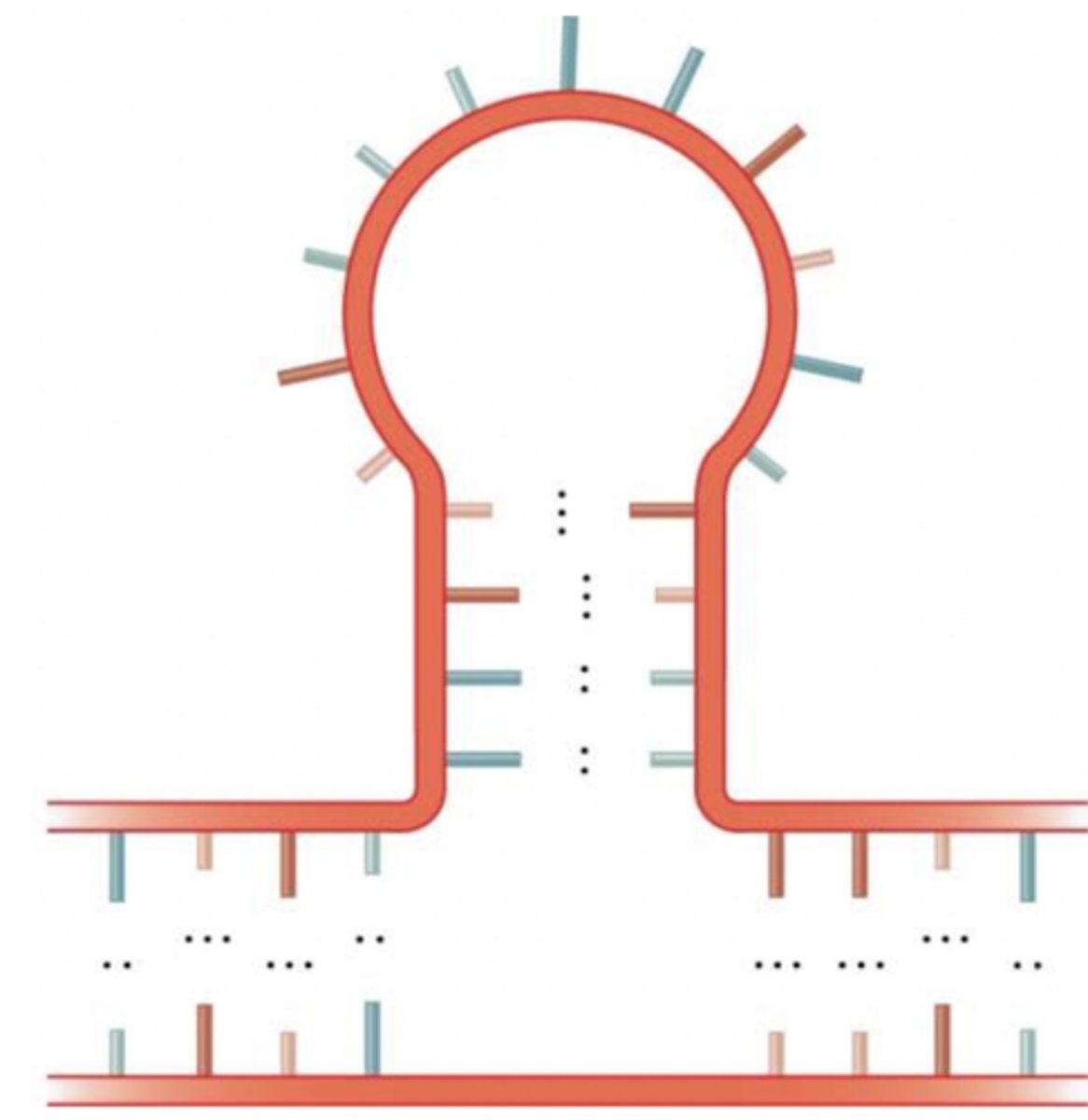
template strand
The DNA strand that provides the template for ordering the sequence of nucleotides in an mRNA transcript.
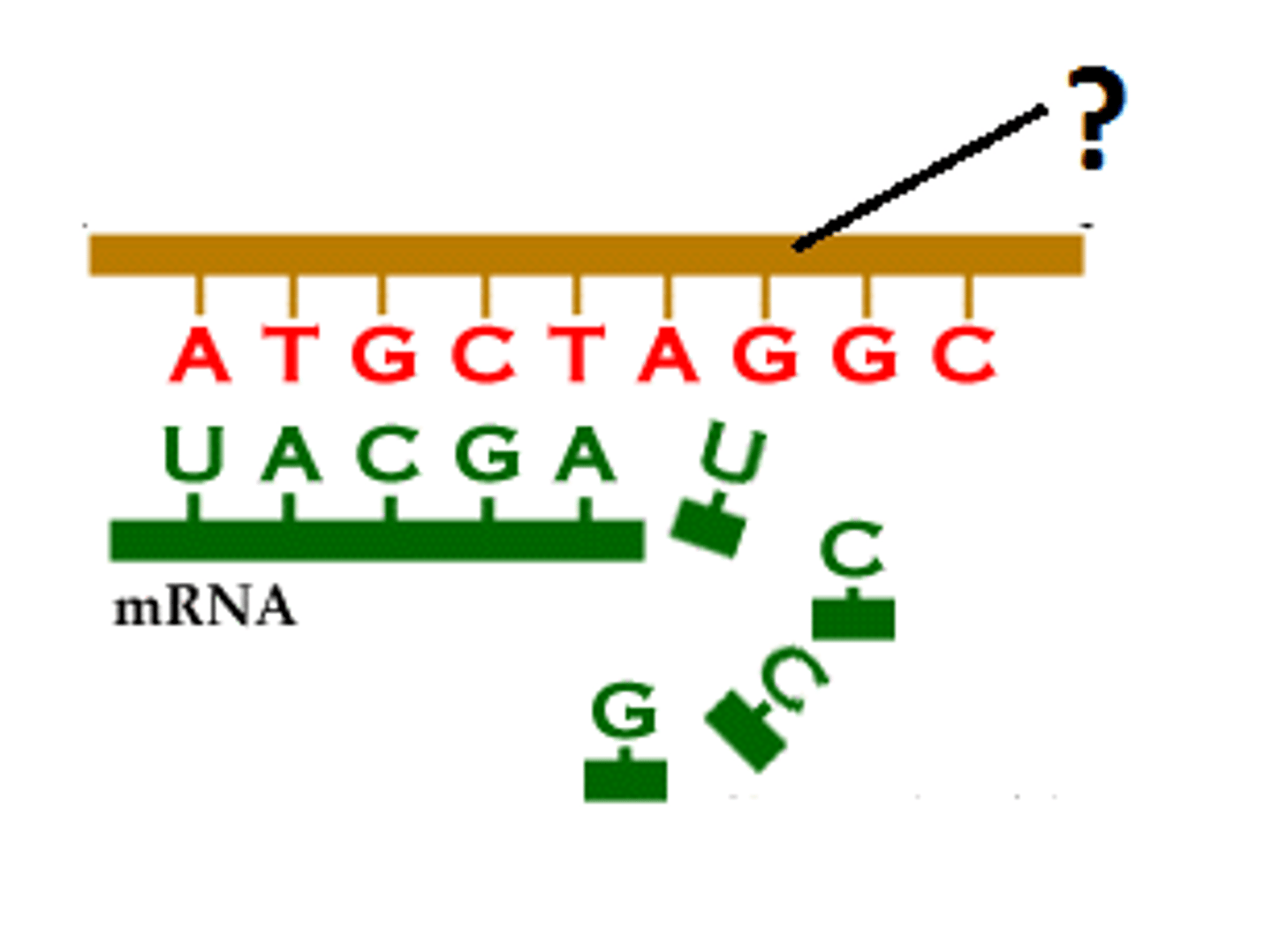
non-template strand (coding strand)
the strand of DNA that is not transcribed into RNA during transcription
